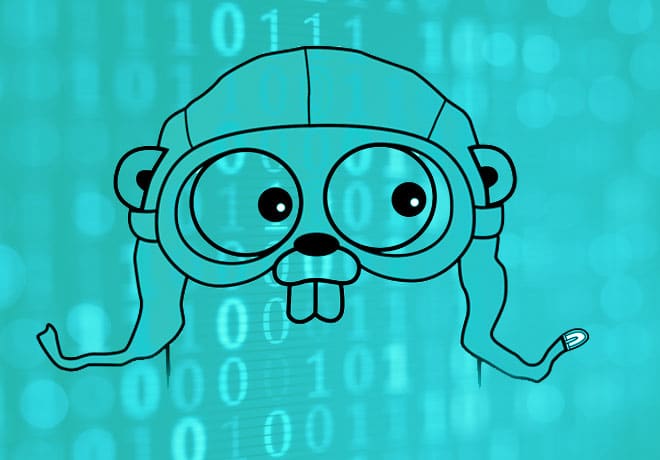Golang has a number of stable and well supported open source machine learning libraries. As it allows for faster production-ready development and a large number of well-supported repositories, it has got glowing endorsements from the open source community. Golang is an emerging open source programming language for machine learning aspirants. In this article, we will discuss the topmost libraries in Golang.
Golang was created by Google in 2007 with the aim of designing an efficient, compiled programming language. It has numerous advantages in terms of reliability and production:
- Build time is very fast in comparison with other languages
- Run time performance is excellent
- Excellent concurrency support
- Rich set of libraries, particularly for machine learning
- Forced error handling to minimise unforeseen exceptions
- Great adaption environment as projects grow
- Great dependency management
- Simpler IDE and debugging
- Native support
Some of the world’s most successful technology companies use Golang as the main language of their production systems and actively contribute to its development. Cloudflare uses Golang in many in-house software projects as well as parts of bigger vital projects. Google itself uses Golang to solve its problems. Uber uses Golang extensively for high throughput and low latency requirements as well as non-disruptive background loading. Dailymotion is a global video streaming service company with a network of over 250 million people that uses Golang extensively. It has developed an application called Asteroid using Golang to manage its Wireguard server. The application improved the efficiency of the company, while adding and removing access to its infrastructure. Golang is emerging as a powerful open source machine learning tool due to its great features and libraries.
Machine learning libraries in Golang
GoLearn
GoLearn is the most vital package for Golang. It can be used for many machine learning algorithms. Density based spatial clustering (DBSCAN), random forest (RF), k-nearest neighbors (KNN), Naïve Bayes (NB), neural network (NN) and principal component analysis (PCA) are the main machine learning algorithms of this package. In order to install this package, you will need to have a compatible compiler installed. After installing Go and the system dependencies, run:
go get -t -u -v github.com/sjwhitworth/golearn
Run the following to complete the installation:
cd $GOPATH/src/github.com/sjwhitworth/golearn go get -t -u -v ./...
Gorgonia
This is a lower level library. The architecture for the model has to be built by the developer. The main striking feature of this library is its ability to deal with multi-dimensional arrays easily and efficiently. The other feature is performance. Since it is a lower level library, building a model takes more steps. However, all the steps are easy. In order to perform any application using Gorgonia, we first need to import some libraries:
package main
Import {
“fmt”
“log”
. “gorgonia.org/gorgonian”
}
We can then start the main function and later carry out the other processing.
goml
This machine learning library is best suited for online and reactive kind of streaming data. To install this package, use the following code:
go get github.com/cdipaolo/goml/base
This package has numerous functionalities. It is very efficient for handling clustering algorithms such as K-means and n-nearest neighbour clustering. The package also implements varied generalised linear models using a gradient descent. Perceptron models are also implemented easily with this package. The package is vital for text based classifications like multiclass Naïve Bayes and TFIDF models.
eaopt
This package is useful for implementing evolutionary optimisation algorithms on top of the existing codebase. It consists of different evolutionary algorithms with consistent APIs. The following is an example of this package:
package main
Import {
“fmt”
“log”
“github.com/MaxHalford/eaopt”
}
}
….. // Rest of the code
EVO
EVO is a powerful library for writing Web services and applications in Golang. It consists of a lot of UI components and integration. It is applicable to both front- and back-ends, and is very easy to use.
GoMind
This package is used for neural network implementation. It supports several activation functions of neural networks – linear, sigmoid, reLU, leaky reLU, etc. The constraint of this package is that it only supports a single hidden layer. It uses the means square error function to calculate an error while back propagating. The following is an example of how to use this package:
package main
Import {
““github.com/singhsurender/gomind”
}
func main()
{
trainingset : = // Assign data
…… // Code inside the function
}
….. // Rest of code
Golang is emerging as a mature ecosystem to build reliable and maintainable machine learning applications due to its rich tools and libraries. In this article, we have discussed six main packages of Golang for effective development of any machine learning application. GoLearn is best for the implementation of density based spatial clustering (DBSCAN), random forest (RF), k-nearest neighbors (KNN), Naïve Bayes (NB), neural network (NN) and principal component analysis (PCA) algorithms. The Gorgonia package is best suited to deal with multidimensional arrays. The package goml is best for clustering algorithms such as K-means clustering and n-nearest neighbor clustering. It is vital for both online and reactive data streams. The package eaopt is important to implement evolutionary optimisation algorithms on top of the existing codebase. The EVO package is not only used purely for machine learning algorithms but also for Web services related to machine learning algorithms. GoMind is used for neural network implementation.



















































































